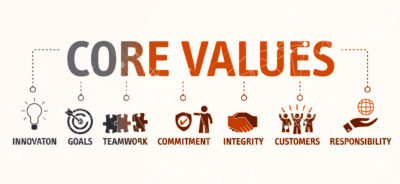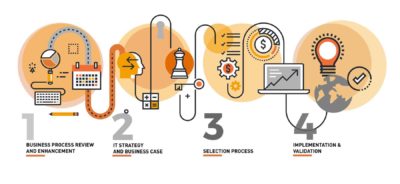Going paperless II – Human Factor is key for a successful digital transformation
A digital transformation endeavor should not be considered different than any other when it comes to set the good foundation of a project. Even though very specific technical skills are required to identify the best “fit to purpose” tools to manage the data of your processes, this should not affect the way to initiate this project.
A Digital Transformation project should challenge the status quo
In our previous article ( where to start with your digital transformation project) we were setting the stage and mentioning the need to clarify the benefits of going paperless before embarking the team and stakeholders in defining their requirements.
Get the team defining their requirements is already the consequence of a series of change management steps.
While the world is getting digital, the laboratory is still working with a lot, too much paper. “We have always done it that way” is the first answer that comes to everybody’s mind yet refrained by an instinctive reflex this might not be the right answer anymore. So, comes the resistance, because we are all human being and by definition, we are reluctant to move from the comfort zone. Our degree of tolerance to change is what makes us innovator, follower, conservative or even retractor and as such will have positive or negative impacts within the team of the project.
“The tools are not suitable for my specific methodology” is also one of the very first statements we use to record at the very beginning of the journey. Curiously, we have basically not started and the assumptions this won’t work are already flying in the air.
In our experience, we have been confronted with organizations that are still working with paper-based processes and others that are almost fully digitized. Why is there so much of large differences between these companies? What should the paper-based companies do to move closer to the digitalized companies?
Change Management: Human factor is key for the success of a digital transformation project
Let’s focus on the very first steps for preparing a digital transformation project to ensure success and tangible return of investment to everyone involved.
The first one is to introduce the project in the clearest way to the stakeholders that will benefit from the change. You have probably understood at this stage that, in our view, the key factor is the human one. A company is based on people and too many technological projects aiming for digital transformation are failing nowadays due to human factors.
Get the right team is essential.
It should be composed of representatives of all areas of the organization involved in the digital transformation project. A project leader should be appointed, a clear commitment from management should be sought.
Good project management methodology brings reliability to the technical implementation of a digital implementation project
The project needs to be explained and described exhaustively to get the “buy-in” of the people.
S.M.A.R.T project goals (specific, measurable, attainable, realistic, time-bound)
It should provide tangible information, measurable metrics, properly defined in time, cost and deliverables.
Additionally, and extremely important for everyone involved, is to understand how much effort and time will be required from their side. The project should clearly define the number of resources required in the different phases and lately to implement the systems which will form part of the digitization project.
A communication plan should be arranged to ensure all stakeholders are aware of the progress, the achievements, and the next steps.
It seems very logical and several companies are having a strong project management methodology in place. Too often the preparation phases are neglected or given less importance. All projects need a good start.
When the project is shaped, the team is in place, management is on board and money is allocated, a high-level plan should be designed to ensure everybody knows WHEN things will happen and WHAT will happen. This will avoid frustrations because all departments are having priorities, and everybody would like to have their needs satisfied first.
This cannot be the case: money can be allocated only over a certain period of time, resources can be deployed only over a certain period of time and moving targets are typically the strongest challenge in project execution.
A successful digital transformation project gets started from a good foundation.




















